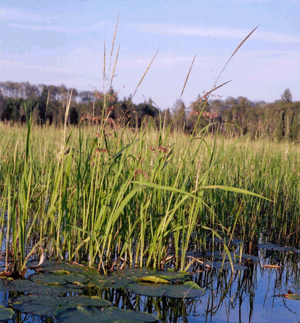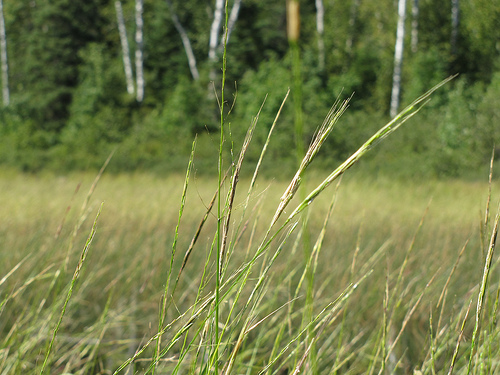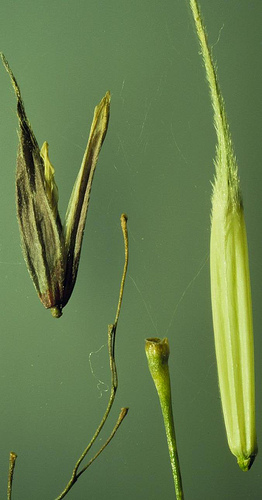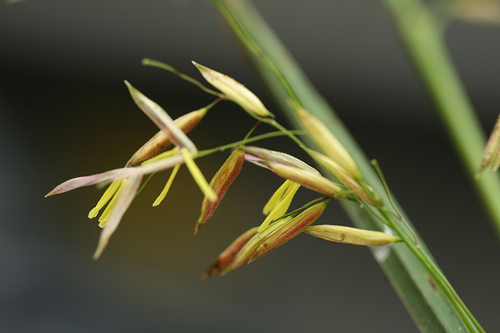Adaptations
Zizania aquatica has made some unique adaptations which allow it to thrive and survive. Read down the numbered points to learn about them!
1) It tends to grow further away from the shore than other aquatic grasses. As discussed on the habitat page, wild rice usually grows in deeper water than other aquatic grasses (up to depths of 5 feet). |
Image from sos.state.mn. |
2) Some of the grains will germinate a year or two after being embedded in the muddy substrate (see reproduction) to ensure that if conditions are poor the following year, some will grow the year after. |
|
3) The female portion of the plant flowers before the male part does. This reduces the possibility of self-fertilization. It is avoided because it puts the plant at a genetic disadvantage. The more-admirable genetic variability that comes with cross-fertilization helps the population as a whole increase in strength. |
Image from flickr.com. Some rights reserved by user Superior National Forest. |
4) The seeds are shaped like arrows to allow them to fall straight into the water and get wedged into the mud below. If they didn't do this, the seeds would get washed away more easily and not sprout the following year. |
Image from www.flickr.com. Some rights reserved by user Matt Lavin. |
5) The male flowers on the plant grow further down on the stalk than the female flowers (pictured to the right) to reduce self-fertilization and increase the genetic variation of wild rice plants in the area. |
Image from www.fllickr.com. Some rights reserved by user dogtooth77. |
Next, click here to learn about its habitat.
To go back to the home page simply click the 'home tab' at the top of this page or click here



